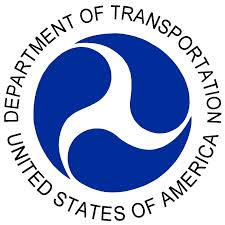

This DOT HAZMAT: Function Specific - Shipping Papers course was developed to help you properly complete shipping papers for the transportation of hazardous materials. This course expands upon the knowledge of shipping papers received as part of Basic General Awareness and is included in Advanced General Awareness Training.
Workers involved in the transportation, manufacture, or use of hazardous materials who require more than basic knowledge of shipping papers should receive this training.
The objectives of this course are to help meet the DOT training requirements of 49 CFR 172.704(a)(2)(i).
Function-specific Training. (i) Each hazmat employee must be provided function-specific training concerning the requirements of this subchapter, or exemptions or special permits issued under subchapter A of this chapter, that are specifically applicable to the functions the employee performs.
Course Topics
This course consists of 8 sections. Students are required to take each section in sequential order as listed below.
Module Section Title Module 1 - Course Overview 1 Shipping Papers 2 Completing Shipping Papers, Steps 1-3 3 Exemptions and Special Permits 4 Requirements by Mode of Transportation 5 Technical Names, Exceptions, and Additional Information 6 Hazardous Substances and Radioactive Materials 7 Shipper's Certification 8 General Formatting and Emergency Response Course Exam
Course Exams
This course has one final exam based upon the course's 4 sections. Students are required to complete the exam after completing all course sections.
The exam consists of 20 questions randomly selected from a large pool of questions. A 70% score or better is required to pass the exam.
If a student does not pass the exam the first time, they may retake the exam as many times as necessary in order to pass.
Additional Training
This course is designed to help workers meet the DOT's requirement for Security Awareness Training. This training is part of a core curriculum of training that includes:
- General Awareness training (Basic or Advanced);
- Function-specific and modal-specific training (Air, Rail, Highway, or Vessel);
- Safety awareness training;
- Security awareness training;
- In-depth security training (if applicable); and
- Driver training for motor vehicle operators (if applicable).
Workers must receive additional training, when required by DOT, OSHA, or EPA standards, on the specific hazards of their job.
Training providers should be used to ensure credibility and augment a company's training program. Therefore, in addition to the training provided by an outside party, a student should receive site-specific training that is supplied by their own company. This training should target the company's unique approach to hazard prevention, including the use of site-specific equipment, health and safety policies, and emergency procedures. As a rule, this company specific training should be well documented.
The bottom line in ALL SITUATIONS is that employers are required to ensure that their employees are adequately trained to do their job.